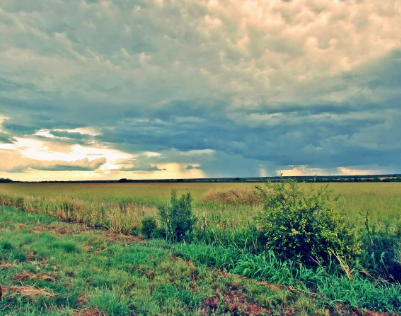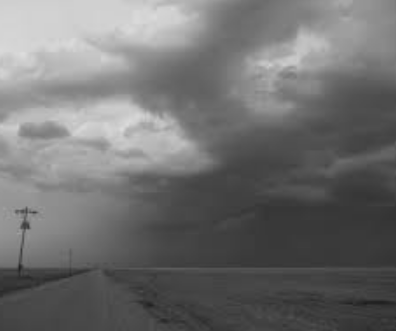

Texas tornado storm kills 3


Texas tornado storm kills 3 individuals as a powerful tornado swept through a small town in northern Texas. The destructive tornado caused extensive damage to approximately twelve prominent structures in Matador, Texas. Authorities have initiated a search and rescue operation to locate individuals who may be injured or trapped beneath debris. Matador, a town with a population of around 600 residents, is situated approximately 300 miles northwest of Dallas. The tornado warning was issued when the storm struck at approximately 8 pm. William Iwasko, a meteorologist from the National Weather Service in Lubbock, Texas, stated that the severity of the damage strongly indicates the presence of a tornado, although an official confirmation will be made on Thursday. The town’s mayor, Pat Smith, who is also involved in emergency services, sadly confirmed the deaths of at least three people, with the possibility of more individuals sustaining injuries. Rescue workers have already extricated some residents from collapsed houses. The mayor also reported a power outage in the town and significant destruction of several businesses. Smith described the situation as extremely dire while speaking with the New York Times, amidst the background noise of emergency crews coordinating their efforts.
On Wednesday night, a storm system moved across the region, prompting the issuance of warnings by the Weather Service regarding potential hailstorms and tornadoes in various parts of northern Texas. This storm in Matador arrived just days after another tornado struck the small town of Perryton, Texas, claiming three lives and causing severe damage to numerous trailers and mobile homes. Those storms were part of a series of intense weather systems that affected several southern states last week. The tornado in Matador occurred simultaneously with a scorching heatwave that enveloped vast areas of Texas and Oklahoma. Texas officials issued an excessive heat warning for the Dallas-Fort Worth region and urged residents in other parts of the state to conserve electricity, as there are concerns about the potential strain on the power grid due to the prolonged triple-digit temperatures.
Tornado videos
https://www.nssl.noaa.gov/education/svrwx101/tornadoes/
TORNADO


What is a tornado?
Tornadoes are powerful and destructive natural phenomena that capture our fascination and evoke a sense of awe. These violent rotating columns of air can cause widespread damage and pose significant risks to life and property. In this article, we will delve into the world of tornadoes, exploring their formation, characteristics, safety measures, and their impact on communities. Join us as we unravel the mysteries of tornadoes and gain a deeper understanding of this awe-inspiring force of nature.
Understanding Tornadoes
Tornadoes are a type of severe weather phenomenon characterized by a rapidly rotating column of air that is in contact with both the surface of the Earth and a cumulonimbus cloud. They typically appear as narrow, funnel-shaped clouds extending from the base of a thunderstorm to the ground. Tornadoes are capable of producing extreme winds, often exceeding 200 miles per hour (322 kilometers per hour), which can cause devastating destruction along their path.
Types of Tornadoes
Tornadoes can manifest in various forms, each with its own unique characteristics. Here are some of the different types of tornadoes:
1. Supercell Tornadoes
Supercell tornadoes are the most common and powerful type of tornadoes. They form within supercell thunderstorms, which are large, rotating thunderstorms with a persistent updraft. Supercell tornadoes often have a well-defined condensation funnel and can last for several hours.
2. Multi-Vortex Tornadoes
Multi-vortex tornadoes consist of two or more small and intense vortices rotating around a common center. These tornadoes can be particularly destructive as the presence of multiple vortices can cause rapid changes in wind direction and intensity within a small area.
3. Waterspouts
Waterspouts are tornadoes that form over bodies of water, such as lakes or oceans. They are typically weaker than land-based tornadoes but can still pose risks to maritime activities.
4. Dust Devils
Dust devils are small, relatively weak tornadoes that form on sunny days in dry and arid areas. They are generally harmless but can sometimes cause minor damage.
5. Landspouts
Landspouts are tornadoes that form from the ground up rather than descending from a cloud. They are often weaker and shorter-lived compared to supercell tornadoes.
What causes a tornado?
Tornadoes require specific atmospheric conditions to form and develop. The following factors lead to their formation:
- Instability: Tornadoes thrive in environments with significant atmospheric instability, where warm, moist air collides with cool, dry air. This instability fuels the development of thunderstorms, which can give birth to tornadoes.
- Wind Shear: Wind shear is the change in wind direction and speed with height. Strong wind shear sets the stage for the rotation necessary for tornado formation. It causes horizontal spinning in the lower atmosphere, which can be tilted vertically by updrafts in a thunderstorm.
- Trigger Mechanism: A trigger mechanism, such as a cold front, a warm front, or a dry line, can initiate the formation of tornadoes by forcing the necessary atmospheric conditions together.
The intricate interplay of these factors creates an environment conducive to tornado development. Once the necessary conditions align, a tornado can be born.
Tornado Characteristics
Tornadoes possess several distinguishing characteristics that set them apart from other weather phenomena:
- Size: Tornadoes can vary in size, with some tornadoes measuring only a few meters across, while others can span over a kilometer in diameter.
- Shape: Tornadoes often appear as narrow, funnel-shaped clouds extending from the base of a thunderstorm. However, their shape can change rapidly, ranging from a slender rope-like structure to a wide and wedge-shaped funnel.
- Wind Speed: Tornadoes are known for their extreme wind speeds, which can exceed 200 miles per hour (322 kilometers per hour). These intense winds contribute to the destructive power of tornadoes.
- Rotation: Tornadoes rotate anticlockwise in the Northern Hemisphere and clockwise in the Southern Hemisphere. This rotation is a result of the Coriolis effect, which influences the direction of air movement due to the Earth’s rotation.
- Duration: The lifespan of a tornado can vary significantly, ranging from a few seconds to several hours. The majority of tornadoes last for less than 10 minutes.
Understanding these characteristics is crucial for meteorologists and storm chasers who study tornadoes to improve forecasting and safety measures.
Tornado Warnings
Due to the destructive potential of tornadoes, timely warnings and alerts are essential to minimize the loss of life and property. Tornado warning systems play a vital role in providing early detection and issuing alerts to the public. Here are some commonly used tornado warning systems:
- Sirens: Outdoor warning sirens are a common method used to alert communities of impending severe weather, including tornadoes. These sirens emit a loud sound that can be heard over long distances, serving as a signal for people to seek shelter immediately.
- Wireless Emergency Alerts (WEA): WEA is a system that delivers emergency alerts to mobile devices within the affected area. These alerts include information about tornado warnings, providing individuals with instant notifications and guidance.
- Weather Radios: Weather radios, also known as NOAA Weather Radio All Hazards (NWR), provide continuous weather updates and alerts. These radios are equipped with Specific Area Message Encoding (SAME) technology, allowing users to receive warnings specific to their location.
- Television and Radio Broadcasts: Local television and radio stations play a crucial role in disseminating tornado warnings to the public. Emergency broadcasts interrupt regular programming to provide up-to-date information and instructions.
It is important for individuals and communities to be familiar with their local tornado warning systems and have a plan in place to respond swiftly in the event of a tornado warning.
Safety Precautions During a Tornado
When a tornado warning is issued or a tornado is imminent, taking the right safety precautions can make a significant difference in protecting lives. Here are essential safety measures to follow during a tornado:
- Seek Shelter: Immediately move to a safe location such as a basement, storm cellar, or an interior room on the lowest level of your home. Avoid windows and seek additional protection by covering yourself with a mattress or heavy blankets.
- Mobile Homes and Vehicles: Mobile homes and vehicles are not safe during a tornado. If you live in a mobile home, leave and seek shelter in a sturdy building. If you are in a vehicle, abandon it and find a low-lying area, such as a ditch, and cover your head with your hands for protection.
- Stay Informed: Keep a weather radio or a mobile device with you to stay informed about the tornado’s progress and any updates from local authorities. Listen to emergency broadcasts for instructions and follow them promptly.
- Emergency Kit: Prepare an emergency kit that includes essential supplies such as water, non-perishable food, flashlights, batteries, a first aid kit, and a battery-powered or hand-crank radio.
- Community Shelter: If you live in an area prone to tornadoes and do not have a safe shelter at home, identify community shelters in advance. Familiarize yourself with their locations and be prepared to reach them quickly when a tornado warning is issued.
Remember, taking immediate action and prioritizing your safety is crucial during a tornado. Stay alert, follow official instructions, and assist others in seeking shelter when needed.
Tornado Facts – Impact on Communities
Tornadoes can have a profound and devastating impact on communities in their path. The destruction caused by tornadoes can affect various aspects of a community’s life. Here are some ways tornadoes impact communities:
- Loss of Life and Injuries: Tornadoes can cause significant loss of life and injuries. The high winds and flying debris pose a direct threat to individuals caught in the tornado’s path.
- Damage to Infrastructure: Tornadoes can cause extensive damage to buildings, roads, power lines, and other critical infrastructure. Entire neighborhoods can be reduced to rubble, requiring extensive rebuilding and recovery efforts.
- Disruption of Essential Services: Tornadoes can disrupt essential services such as electricity, water supply, and communication networks. Restoring these services can take time, leaving communities without basic necessities.
- Emotional and Psychological Impact: Tornadoes can have a lasting emotional and psychological impact on individuals and communities. Survivors may experience trauma, grief, and anxiety, requiring support and counseling services.
- Economic Consequences: The economic consequences of tornadoes can be substantial. Rebuilding damaged infrastructure, businesses, and homes can place a significant financial burden on communities. Additionally, the disruption to local economies due to business closures and job losses can have long-term effects.
Communities affected by tornadoes rely on a combination of government assistance, community support, and resilience to recover and rebuild. The collaboration of various agencies, organizations, and volunteers plays a crucial role in helping affected communities get back on their feet.
How to prepare for a tornado
Being prepared for tornadoes and having a well-defined emergency response plan is crucial to mitigating the risks associated with these natural disasters. Here are some key aspects of tornado preparedness and emergency response:
- Emergency Kits: As mentioned earlier, having emergency kits stocked with essential supplies is essential. These kits should include food, water, medications, a first aid kit, flashlights, batteries, and a portable radio.
- Family Communication Plan: Develop a family communication plan to ensure that everyone knows how to reach each other during a tornado or other emergencies. Designate a safe meeting place and establish alternative communication methods in case phone lines are down.
- Tornado Drills: Conduct regular tornado drills to practice seeking shelter and familiarize yourself with the safest areas of your home or workplace. Schools, businesses, and organizations should also have tornado drill protocols in place.
- Community Warning Systems: Stay informed about the tornado warning systems in your community. Sign up for local alerts and ensure that you receive notifications on your mobile devices.
- Collaboration with Authorities: Stay connected with local emergency management agencies and follow their guidelines during tornado warnings. Cooperate with authorities and follow evacuation orders, if necessary.
- Post-Tornado Assessment and Recovery: After a tornado, follow the instructions of local authorities regarding re-entry into affected areas. Be cautious of hazards such as downed power lines, broken gas lines, and debris. Assist in community recovery efforts by volunteering or donating to relief organizations.
By taking proactive steps in preparedness and response, individuals and communities can minimize the impact of tornadoes and increase their resilience in the face of these natural disasters.
What is the most famous tornado in history?
Throughout history, several tornadoes have left a lasting impact due to their sheer power and devastation. Here are a few famous tornadoes:
- Tri-State Tornado – 1925: The deadliest tornado in the history of the U.S., the Tri-State Tornado, struck Missouri, Illinois, and Indiana, resulting in approximately 695 fatalities and extensive damage.
- The Great Natchez Tornado (1840): This tornado struck Natchez, Mississippi, and traveled approximately 40 miles, causing massive destruction and claiming over 300 lives.
- The Joplin Tornado (2011): The EF5-rated tornado struck Joplin, Missouri, leaving a path of destruction almost a mile wide. It caused significant loss of life and property damage.
- The Bridge Creek-Moore Tornado (1999): This tornado, rated as an F5 on the Fujita scale, hit the Oklahoma City metropolitan area, including Moore, causing widespread devastation and resulting in over 40 fatalities.
These tornadoes serve as stark reminders of the immense power and destructive capabilities of these natural phenomena. They have played a significant role in advancing tornado research, emergency preparedness, and community resilience.
Tornado Chasing
Tornado chasing is a unique pursuit that combines science, adventure, and a deep fascination with tornadoes. Tornado chasers are individuals who actively track and observe tornadoes to gather valuable scientific data and improve our understanding of these phenomena.
Tornado chasers utilize advanced weather monitoring tools, such as radar systems, to identify the formation and movement of tornadoes. They often work in close coordination with meteorologists and research organizations to gather valuable field data.
The primary objectives of tornado chasing include:
- Data Collection: Tornado chasers aim to collect data on tornadoes, including their size, shape, intensity, and movement patterns. This information helps meteorologists improve tornado forecasting and develop better warning systems.
- Research and Analysis: The data collected by tornado chasers is analyzed by scientists and researchers to gain insights into tornado formation, behavior, and the atmospheric conditions that contribute to their development.
- Improving Warning Systems: By studying tornadoes up close, researchers can refine tornado warning systems and enhance their accuracy and lead time. This plays a crucial role in providing communities with more time to seek shelter and potentially saving lives.
- Education and Outreach: Tornado chasers often engage in educational initiatives and public outreach to raise awareness about tornadoes and promote tornado safety. They share their experiences and knowledge to help communities become better prepared for severe weather events.
It is important to note that tornado chasing can be dangerous and should only be undertaken by trained professionals who prioritize safety and adhere to strict protocols. Public safety should always be the top priority in tornado research and observation.
Conclusion
Tornadoes are powerful and awe-inspiring natural phenomena that can cause significant destruction and loss of life. Understanding their formation, characteristics, and the impact they have on communities is crucial for improving preparedness, response, and resilience.
By staying informed, following safety protocols, and collaborating with authorities, individuals and communities can reduce the risks associated with tornadoes. Continuous research, advanced warning systems, and community support contribute to minimizing the impact of these destructive forces of nature.
Remember, tornadoes are unpredictable and should never be taken lightly. Stay vigilant, have a plan in place, and be prepared to take immediate action when tornado warnings are issued.
FAQs
What is a tornado one-sentence answer?
A tornado is a viciously rotating column of air that is in contact with both the surface of the Earth and a cumulonimbus cloud. It is often characterized by a visible condensation funnel and high winds.
How can I stay safe during a tornado?
To stay safe during a tornado, seek shelter in a basement, storm cellar, or an interior room on the lowest level of your home. Avoid windows and cover yourself with a mattress or heavy blankets for additional protection.
What are the potential impacts of tornadoes on communities?
Tornadoes can cause loss of life, injuries, damage to infrastructure, disruption of essential services, emotional and psychological impact, and economic consequences in affected communities.
What should I include in an emergency kit for tornado preparedness?
An emergency kit for tornado preparedness should include water, non-perishable food, flashlights, batteries, a first aid kit, and a battery-powered or hand-crank radio.
What is tornado chasing?
Tornado chasing is the practice of actively tracking and observing tornadoes to gather scientific data and improve our understanding of these phenomena. It involves trained professionals using advanced weather monitoring tools for research purposes.
Where do tornadoes commonly occur?
Tornadoes can occur in several parts of the world, including Australia, New Zealand, Europe, Africa, Asia, and South America. Some countries with high tornado activity outside the U.S. include Argentina and Bangladesh.
How many tornadoes are typically seen in the United States each year?
The United States experiences approximately 1,200 tornadoes annually. However, it’s important to note that the records only date back to 1950, and changes in tornado spotting and reporting methods over the years have led to increased observations of tornadoes.

